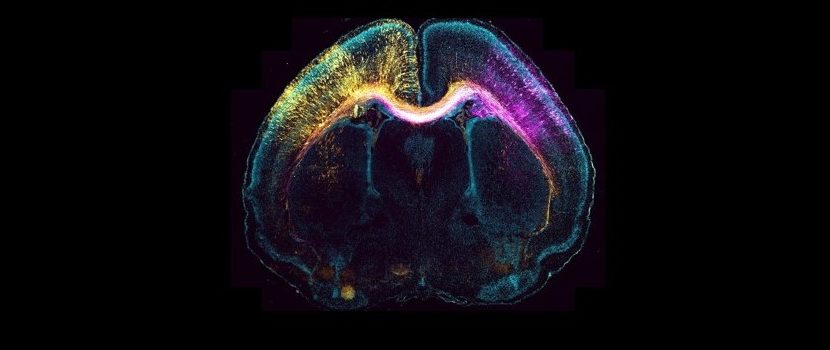
The neuronal centrosome controls radial migration of projection neurons in the developing brain
Scientists from the Centre of Nanomaterials and Biotechnology (CENAB) at the Faculty of Science of Jan Evangelista Purkyně University in Ústí nad Labem with colleagues from several German scientific institutes, including the German Center for Neurodegenerative Diseases in Bonn have made a breakthrough discovery in neurobiology, solving a long- standing mystery about the wiring and movement of nerve cells. Although nerve cells wire the brain to enable communication with other cells through a process known as axon growth, they also simultaneously migrate to a specific place in the brain cortex. Remarkably, these two dynamic processes are both fuelled by the microtubule cytoskeleton, but they are controlled separately.
According to Dr. Stanislav Vinopal and Dr. Sebastian Dupraz, the centrosome, an organelle known for its importantance for proper cell division, regulates nerve cell migration but does not play a role in the formation and growth of the axon. Their findings, published in the prestigious journal Neuron, resolve a central debate in neurobiology, as previous studies had not been able to disentangle the nuanced contributions of the centrosome to the processes occuring during brain development.
Using molecular tools, the researchers were able to control the function of the centrosome both in vitro and in vivo and discovered that axon formation occurs independently of centrosomal activity. However, neuronal migration is significantly influenced. This result suggests that a different mechanism is responsible for the growth of the axon, known as acentrosomal formation of microtubules. This finding may open up new research opportunities for studying the formation and growth of axons. Moreover, the discovery may help develop a molecular therapy for inherited diseases, such as developmental pachygyrias, linked to mutations of the centrosomal protein gamma- tubulin. In these disease phenotypes, axons are mostly intact, while neuronal migration is
impaired. Thus, a future therapy might focus on this point.
Overall, the findings are a significant step forward in understanding the wiring and movement of nerve cells and may have important implications for the development of treatments for inherited neurological diseases.
https://www.cell.com/neuron/fulltext/S0896-6273(23)00070-3
Contact: stanislav.vinopal@ujep.cz
#scienceUJEP
Picture source: DZNE / Sebastian Dupraz – RG Bradke